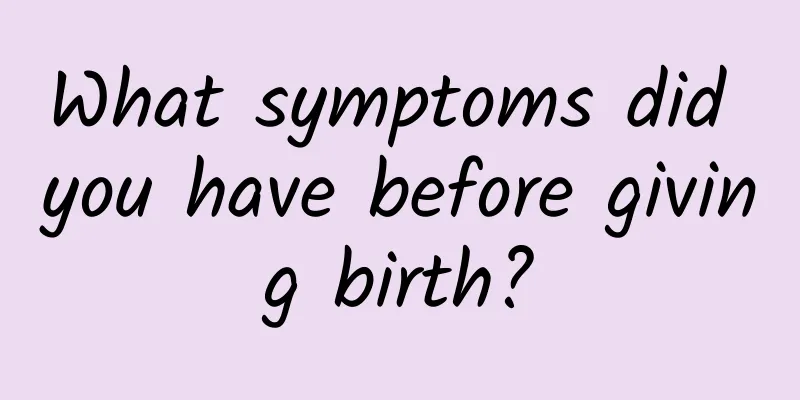What medicine should I take for anxiety and phobia?

|
Most of the factors that cause tension are closely related to a person's growth environment and personality. Some people will not be afraid even in some big scenes, while some people will feel very nervous and fearful even when talking to others casually. This phenomenon varies from person to person, but if long-term tension and fear can cause great defects in a person's personality, then what medicine should be taken to control tension and fear? 1. Anxiety Both anxiety disorders and phobias have anxiety as their core symptom, but the anxiety of anxiety disorder patients is persistent and not directed at a specific situation or object. The anxiety associated with phobias is often situational, targeted, and episodic, and the anxiety may be alleviated or disappear with avoidance of the feared object or situation. 2. Obsessive-compulsive disorder Obsessive-compulsive symptoms originate from certain thoughts or ideas in the patient's mind. The patient is afraid of losing self-control, not fear of external things, and often has compulsive actions. 3. Hypochondriasis Patients with disease fear may be similar to those with hypochondriasis. The fear is generally not prominent, and hypochondriasis patients worry about themselves and believe that their doubts and worries are reasonable; while phobias fear external objects or situations and believe that such fear is irrational and cannot be shaken off. (1) Behavioral therapy, including systematic desensitization therapy and exposure therapy, is the most important method for treating specific phobias. The principles include: first, eliminating the conditioned association between the fear object and the anxiety-fear response, and second, counteracting the avoidance response. (2) Cognitive behavioral therapy Cognitive behavioral therapy is the preferred method for treating phobia. Previous behavioral therapy methods have placed more emphasis on observable behavioral actions, but the long-term efficacy has been less than satisfactory. Cognitive behavioral therapy, while adjusting the patient's behavior, emphasizes the adjustment of the patient's irrational cognition, which is more effective. Especially for patients with social phobia, their distorted beliefs and information processing processes cause the symptoms to persist, and correcting these distorted cognitive patterns is a very critical part of treatment. (3) Social skills training: Patients with social phobia often have social skills deficiencies or underestimate their social skills. Therefore, a certain period of training can improve the patient's symptoms. Includes: therapist's demonstration role, social reinforcement, exposure homework exercises, self-affirmation training, etc. 1. List the various scenes that can cause you tension and fear in order from light to heavy (the more specific and detailed the better), and copy them onto different cards. Put the scene that scares you the least at the front and the scene that scares you the most at the back. Arrange the cards in order. 2. Perform relaxation training. The method is to sit in a comfortable seat, breathe deeply regularly, and relax your whole body. Once you are in a relaxed state, take out the first card in the series and imagine the scene. The more realistic and vivid your imagination is, the better. 3. If you feel a little uneasy, nervous and scared, stop imagining, take a deep breath and relax yourself again. After you are completely relaxed, re-imagine the failure you just experienced. If anxiety and tension occur again, stop and relax. Repeat this process until the situation on the card no longer makes you anxious and nervous. 4. Continue with the next scene that scares you more (the next card) in the same way. Please note that each time you enter the imagination of the next card, it must be based on the standard that you no longer feel uneasy and nervous when imagining the previous card. Otherwise, you are not allowed to enter the next stage. 5. When you can imagine the most frightening scene without blushing, you can then do the on-site exercises in order from light to heavy. If you feel uneasy and nervous at the scene, you can also take deep breaths and relax to combat it until you are no longer afraid or nervous. Experts remind that it is best to get rid of phobia under the guidance of a doctor in order to achieve the best results. |
>>: When should tetanus be given?
Recommend
What causes bladder pain?
The bladder meridian is a common meridian in trad...
How to remove dead skin from your lips, six tips to give you sexy lips
Many people tend to have dry and flaky lips when ...
Precautions for women's hemorrhoids sitz bath
Nine out of ten people have hemorrhoids. Hemorrho...
Symptoms and treatment of urticaria in children
Infantile urticaria is actually a type of urticar...
The efficacy and function of walnut yellow peel
The yellow skin wrapped around the walnut has cer...
What causes bitter mouth?
I believe many of my friends have had this or sim...
What causes swollen and painful eyelids?
Swollen and painful eyelids means puffy eyes. The...
How to maintain bowel movement when eating less?
In life, many people think about how to lose weig...
Acupuncture points around the belly button
We all know that the area around the belly button...
Why are my calves and feet numb?
In our daily lives, we often encounter numbness i...
Chinese herbal medicine for itchy skin
More and more people do not pay attention to taki...
Bad breath Chinese patent medicine
Bad breath is a health problem that many people h...
Medicine for clearing dampness and heat
Damp-heat constitution is a health problem that m...
What are the causes and clinical manifestations of peripheral facial nerve palsy?
Peripheral facial nerve paralysis is a disease in...
Don’t let these 4 “fake colds” confuse you, they’re dangerous!
Coughing, runny nose, sneezing... In the eyes of ...









